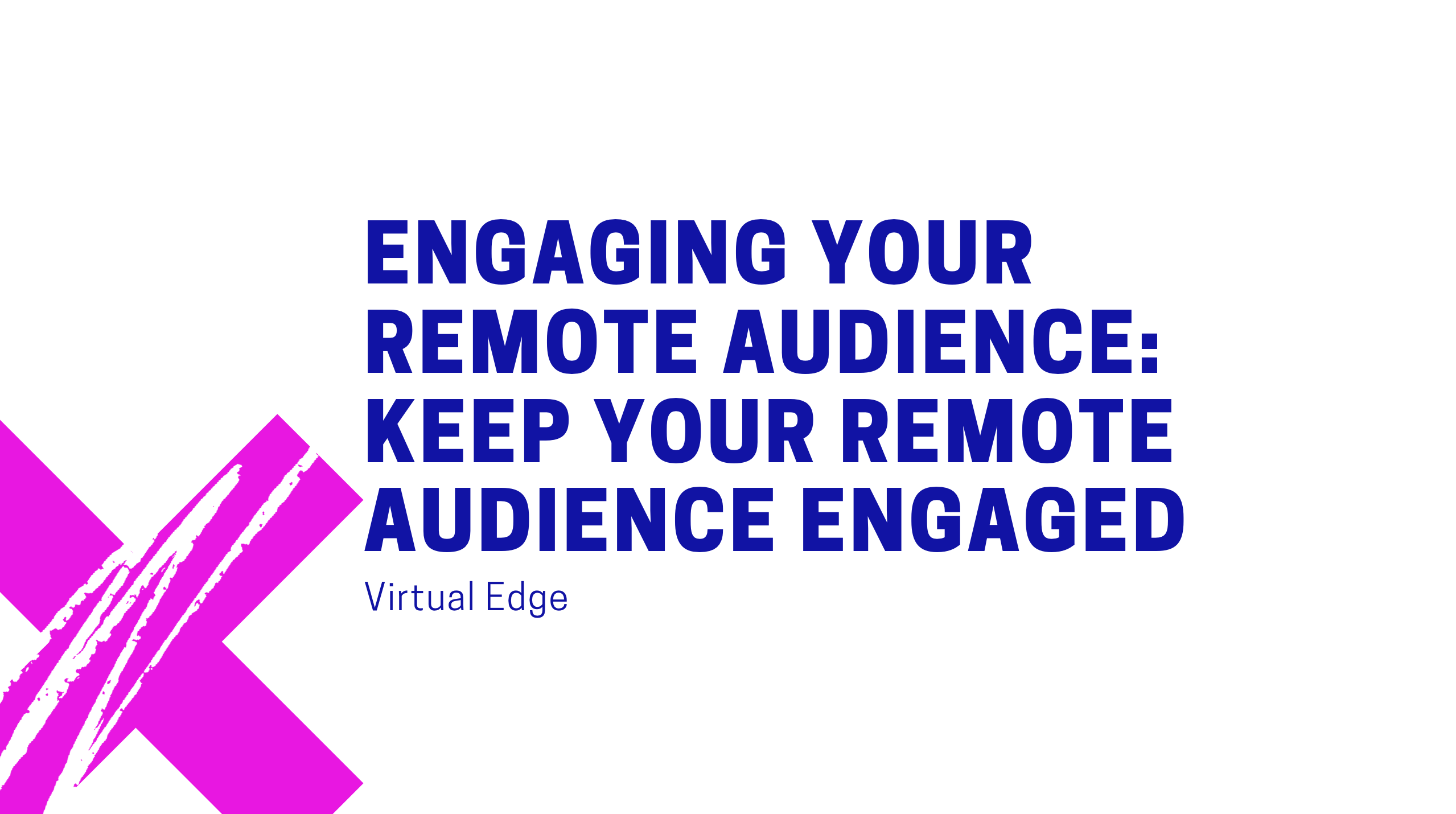How do you know if a remote audience is engaged?
We must always remember that there is a difference between engagement and interaction…just because a virtual audience member doesn’t interact does not mean that they aren’t engaged. Many virtual platforms have monitoring and measuring tools to assess the viewing patterns of the virtual audience. Yes, I did say “viewing” as opposed to “participating” because the tools can only measure tune in/tune out patterns.
Some even have attention checking tools, which I believe are valuable in mandatory attendance scenarios such as when receiving continuing education credits. And using polling features will provide an indication of how many virtual audience members are invested in that particular session.
In fact, I think a thumbs up/thumbs down feature at the end of each session could provide valuable instantaneous feedback about speakers to event planners and give an insight into how engaged the virtual audience is with that session topic. Otherwise, the conversations occurring on communication tools via the virtual platform and social media channels provide insight on if a virtual audience is being engaged by the event.
The rate of increase of “on-site” virtual audience registrations is also a good indication of a successfully engaging event since they will most likely be the result of a recommendation of a friend or colleague or an active social media stream.
And quite honestly, the virtual audience is quick to comment when they do not find an event engaging and even quicker to walk away. So continuous negative comments or a drop in viewers is a good indication that an event is NOT engaging and something needs to be done fast!
I always believe that if you want an answer, you should ask for it. Ask the virtual audience constantly and continuously throughout the day what you can do for them. Send a quick and efficient survey immediately following the event asking the virtual audience if they were engaged. And if they were not, ask how you can provide a better experience for them next time. Why not even send a survey at the end of each day of the event so that you can adjust on the fly if necessary?
What are some solutions to the common problems with engaging a remote audience?
My 3 rules of engagement are the following:
- RULE #1 – Know your audience.
- RULE #2 – Give your audience what they want.
- RULE #3 – Give your audience what they want in the way they wish to receive it.
In that respect, I think the biggest problem with engaging a virtual audience is when event planners do not provide them with the ways and the means that they feel most comfortable using. For example if only 20% of your audience is active on Twitter, then Twitter is not an appropriate communication tool to use during the event.
I also believe that event planners must go out of their way to educate the virtual audience on how to participate in the event before the event ever begins. Video tutorials are a great way to teach the virtual audience the tools necessary to have an interactive event, and can always be re-watched during the event if a refresher is necessary.
The virtual platform must have an interface that is free of clutter and has a pleasing interface to the virtual audience that has a style and a brand that is consistent with the event. I am a big believer in “keep it simple” as the virtual audience prefers simple and effective rather than complicated and frustrating.
The virtual audience is ever changing, which means that the virtual audience constantly and continuously needs to be reminded of how to participate and what tools are being used to communicate. And I feel that several moderators are required to ensure that the virtual audience always has their questions answered as quickly as possible in regard to technical issues, content clarifications, game participation, general inquiries, and whatever else is applicable to your event.
But these are just tools…and tools aren’t engaging, people are. This is why I created and defined the role of virtual emcee…and why I will continue to refine the role as events and technology evolve!
